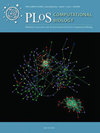
WOS期刊SCI分区
WOS期刊SCI分区是指SCI官方(Web of
Science)为每个学科内的期刊按照IF数值排
序,将期刊按照四等分的方法划分的Q1-Q4等级,Q1代表质量最高,即常说的1区期刊。


微信扫码提交文章

